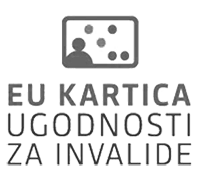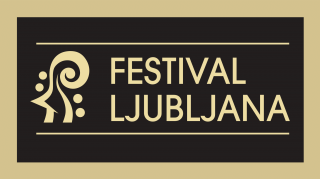Important information
EXHIBITION OPENING:
4.9.2025 at 6.00 pm
EXHIBITION OPENING HOURS:
Monday-Friday
10.00 am-4.00 pm
On days, when there are 73rd Ljubljana Festival events in Križanke:
12.00 pm-start of the event
Slavko Tihec emerged into the world of contemporary sculpture in the second half of the 1950s. Born in Maribor in 1928, he graduated from the Academy of Fine Arts in Ljubljana in 1955, having studied under the sculptor Boris Kalin. He also spent some time as a student in Johnny Friedlaender’s printmaking studio in Paris. He had his first exhibition in 1957, exhibiting alongside Rudolf Kotnik at Maribor Art Gallery and alongside Avgust Černigoj in the foyer of the theatre in Celje. In 1962 he had his first exhibition at Ljubljana’s Jakopič Pavilion, together with Kotnik. In 1964 the pair exhibited abroad for the first time, in Vienna, while in 1965 they exhibited together at the Festival Hall in Bled. In 1967 Tihec had an exhibition at Galerie 61 in Klagenfurt alongside Kiar Meško. He had notable solo exhibitions at Mala Galerija [Little Gallery] in Ljubljana in 1966 and 1977, both curated by Zoran Kržišnik, who also wrote the introductory texts in the catalogue. He also had a solo exhibition at Maribor Art Gallery in 1978, for which Maja Vetrih and Breda Ilich Klančnik wrote the introductory texts. After a long silence due to illness, he returned in 1990 with his last exhibition at the Meblo Gallery in Nova Gorica, which I had the honour to organise. The exhibition then transferred to the gallery of bookshop Tržaška knjigarna/Libreria Triestina in Trieste. He dedicated the exhibition to the sculptor Negovan Nemec, his student and friend.
Slavko Tihec participated in numerous exhibitions at home and abroad, the most important of which included the Fine Arts Triennial in Belgrade, the Mediterranean Biennial in Alexandria, the Venice Biennale and the São Paulo Art Biennial. He participated in the Forma Viva international sculpture symposia in Ravne na Koroškem and Maribor. In 1984 he was reappointed full professor of sculpture at the Academy of Fine Arts in Ljubljana.
He won numerous honours, among them a Prešeren Fund Prize in 1967, the Jakopič Prize in 1973 and the Order of Labour with Gold Wreath in 1980. He received the Prešeren Prize in 1983 for his high-quality innovations in sculpture, in particular for his creatively innovative solutions for monuments commemorating the National Liberation Struggle, where the award citation emphasised that Slovene sculpture had also gained “greater weight on its rational side” through Tihec’s work. A few months later he became seriously ill. He was honoured at the 7th Yugoslav Biennial of Small Sculpture, held in Murska Sobota in 1985, in a validation of his ongoing artistic explorations, but his illness afforded him no respite. He died in Ljubljana in 1993 and is buried in Maribor.
Slavko Tihec, an insightful and inquisitive artist with a keen sense for proportions and plasticity, modelling masses and exploring structured constructional elements of a variety of shapes and sizes, left a highly original mark on both small-scale and monumental sculpture in Slovenia and what was then federal Yugoslavia in the second half of the twentieth century, devoting equal attention to both approaches and alternating between them throughout his career. Between 1958 and 1959 he created a monument to the Pohorje Battalion at Osankarica, a strikingly vivid interpretation of two life-size bodies, highly stylised and distinctively deformed, whose volumes are perceived with exquisite subtlety through soft transitions of lines and forms. According to art historian Špelca Čopič, this work contributed to public acceptance of new sculpture. An important milestone in the development of public sculpture came with the unveiling of his National Liberation Struggle monument in Maribor’s Freedom Square in 1975. The shape of this monument, the largest public bronze sculpture in Yugoslavia at the time of its unveiling, is that of a falling drop at the moment it rebounds from the ground. Set into the monument are narrow bands printed with a collage of images cascading towards the ground. Taken from documentary photographs, these images were placed in an original raster structure via a screen printing technique, which encourages a dual experiencing of the surface. If for the Maribor monument Tihec used soft forms derived from a sphere, in the case of the monument to Ivan Cankar, which since 1982 has stood in front of the Cankarjev Dom cultural and conference centre in Ljubljana, he began with a cube and used its sides for the writer’s engraved signature and his portrait, which with its raster creates a mobile, illusionistic image. What kind of challenge did monumental sculpture represent for Slavko Tihec? In his words: “Like any sculptor, I was attracted above all by the fact that a monument allows you to put yourself to the test on a large scale and test your mastery of the material. A sculptor couldn’t afford such a big project on his own. You can’t experiment with a monument, it would be too dangerous. The path to its realisation must be prepared down to the last detail.”
Although Tihec abandoned his traditional training shortly after completing his studies, we can nevertheless define his first period as figurative, with an already distinctive and original approach, whether in clay and bronze or, later, in plaster, where he began to think increasingly about constructing a sculpture and less about modelling it. Tihec was an original and independent-minded explorer of new expressive possibilities and new materials: he negated the plasticity of form through the use of verticals, through a method of modelling that disperses light, by revealing elements of the skeleton, and by using contrasting materials. In the early 1960s he was one of the first sculptors in Slovenia to abandon figurative sculpture entirely. His interest now centred on vegetative forms, where the material spoke and technology came alive, and where an increasingly eloquent two-dimensionality found expression. He described these works as being like floating and growing foliate metal sculptures. He was unremitting in his search for a suitable material and made a conscious decision to create a different form. He wanted to connect absolute and relative volume in a carefully considered whole, with the linearly conceived shape of a leaf pushing up into the sky. Tihec materialised a little piece of nature in his own sculptural vision and in a hitherto unfavoured sculptural material, working in welded iron, a combination of welded iron and concrete or welded iron and wood, or in welded aluminium. These materials demanded a high level of technological skill and knowledge of physical and chemical laws. They became an increasingly powerful means of expression: a suggestion of movement, rhythm, sound, shape.
Over time, water drew him into realms of unimagined and unknown possibilities and prompted him to explore movement and the reflections of light and shadow. This is where Tihec gave his exploratory spirit its freest rein. He made repeated attempts to transfer the suggested movement of his foliate forms phase into real movement. Water, space and playful polyester forms moved in various rhythms. These Aquamobiles, rational in form and white, green or bluishly cold in colour, shaped Tihec’s second period, which began in 1969 with the mobiles he showed for the first time at the “constructive art” exhibition at that year’s Nuremberg Biennial. The second period, in which a constructivist endeavour is apparent and which is characterised by mobiles, lasted until 1975, when Tihec’s third period began.
Tihec began to address the question of how human beings are trapped in the moulds of everyday life. His Containers, which, like the world we are trapped in and from which it is difficult to escape, carry several layers of meaning in their characteristic horizontal and vertical lines and reveal their message in the interplay of light and shade. Wood now becomes his material, one that he uses frequently in this period along with mirrors. He also uses brass and bronze. Through the use of a new technological process, discovered by Tihec, a raster emerges and, through mechanical erosion, offers a suggested graphic, illusionistic image. In this period he succeeded in combining the approaches of sculptor and printmaker, with the faces of his subjects – his mother, friends, fellow artists – outlined in the structure of the material. This was the culmination of his explorations and aesthetic development, now realised in a series of stunning works. With their rationally measured and precisely assembled space, his rastered Containers in bronze or brass create a shell with anti-portraits and offer a different message: these are outlines of a face or figures, perceived as volumes, where a new and complete form is created through a mass of elements arranged according to a defined and carefully considered order. This image is not always trapped in a container or crate-like form. It is also extremely eloquent in the spherical forms that Tihec developed at the same time. Taking a lye-soaked wooden sphere, the geometrically most perfect and self-contained body, the sculptor mutated it in various ways. In his search for new possibilities, new forms and messages, he squeezed, compressed and shaped the sphere into various forms, eventually stopping at a drop or tear shape. He was looking for allegories of inner pain. For a form that in itself would communicate and express hope.
He was eloquent about his artistic convictions and his search for new views and approaches, using well-chosen comparisons and arguments to illustrate his point. He was thoughtful and innovative. And therefore fascinating and warm to talk to. In his last years he thought a lot about slowly stepping into a cloud and alighting from it where everything is white. “It’s the same with me – I step into the fog, unable to see ahead. I would like to have enough energy to continue to play my game until the end of my life, for the joy of those who love me and the sorrow of those who don’t care for me.” This game resulted in a number of masterful creations that are part of our cultural heritage, including some that are among the very finest works of contemporary sculpture.
The exhibited works are the property of Maribor Art Gallery. Sincere thanks are due to museum director Simona Vidmar Čelik and curatorial consultant Breda Kolar Sluga for their friendly cooperation and assistance, and to all who have helped make this exhibition possible.
dr. Nelida Nemec
Photo information:
Owner: Maribor Art Gallery
Photographer: Damjan Švarc



